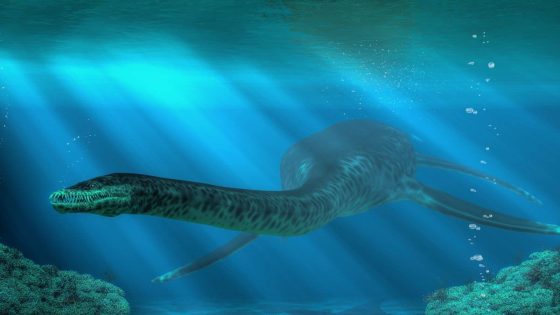A remarkable discovery has been made with the finding of a 183-million-year-old plesiosaur fossil in Germany. This ancient marine reptile offers scientists a unique glimpse into its external anatomy, revealing features that challenge long-held beliefs about these creatures. How did plesiosaurs adapt to their underwater world? This question is now being answered thanks to preserved soft tissue found in the fossil.
- 183-million-year-old plesiosaur fossil discovered
- Soft tissue preservation is extremely rare
- Plesiosaurs had smooth and scaly skin
- Discovery reshapes understanding of plesiosaur anatomy
- Findings enhance knowledge of evolutionary adaptations
- Fossil analysis reveals hunting efficiency insights
Discovering the Secrets of the 183-Million-Year-Old Plesiosaur Fossil
What can a fossil tell US about a creature that lived millions of years ago? The recent discovery of a plesiosaur fossil near Holzmaden, Germany, has unveiled astonishing details about its skin texture. This finding is crucial for understanding how these ancient predators thrived in their aquatic environments.
New Insights into Plesiosaur Anatomy and Adaptation
The plesiosaur fossil is a game-changer for paleontologists. Previously, scientists believed these creatures had smooth, scaleless skin. However, the new study reveals a fascinating combination of smooth and scaly textures. This discovery opens up new avenues for research into how plesiosaurs adapted to their marine habitats.
Understanding the Plesiosaur’s Unique Skin Features
The unexpected discovery of both smooth and scaly skin in the plesiosaur fossil provides insights into its biology. Researchers utilized advanced techniques to analyze the fossil, leading to several key findings:
- Preserved soft tissue includes skin cells, offering a rare look at ancient anatomy.
- The combination of textures suggests specialized adaptations for hunting and mobility.
- This fossil challenges previous assumptions about marine reptiles’ skin.
- Insights gained can influence future evolutionary studies.
Implications for Evolutionary Research
This remarkable fossil is more than just a curiosity; it serves as a vital piece of the evolutionary puzzle. The mix of skin types indicates that plesiosaurs developed unique adaptations to thrive in diverse underwater environments. This discovery prompts scientists to rethink how these ancient reptiles interacted with their ecosystems.
Conclusion: A New Era of Plesiosaur Research
The discovery of the 183-million-year-old plesiosaur fossil is a significant milestone in paleontology. By revealing preserved soft tissue and a complex skin structure, researchers are now better equipped to understand the life and adaptations of these ancient marine predators. What other secrets might future fossil discoveries unveil?
































